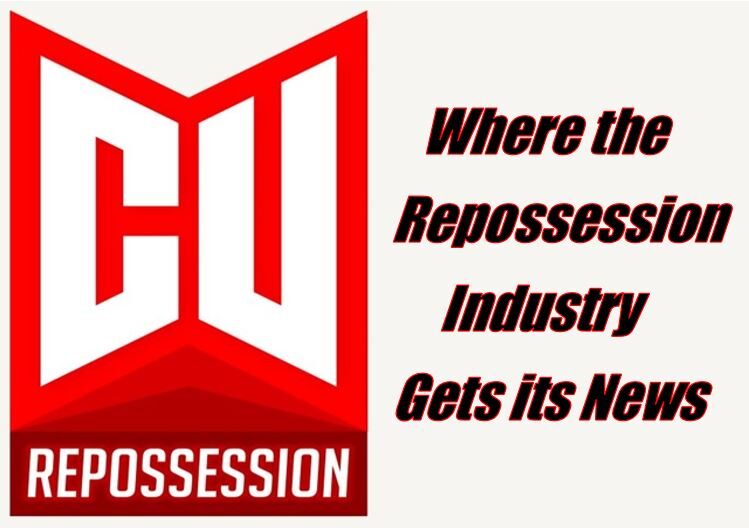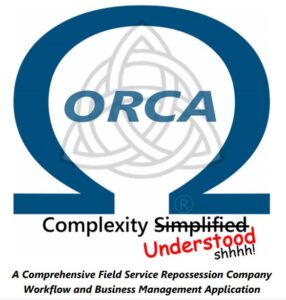“Palm Strike’s main superpower is the stupidity of his enemies.” – Charlie Jane Anders, The Magazine of Fantasy & Science Fiction, July/August 2014
GUEST EDITORIAL
To reference a current topic, we can all relate to, I focus some of the material in this article to the current issues surrounding the broker Primeritus in hopes of refocusing on a larger issue within our industry, not to pile on to a bad situation or disparage them. Everyone should note that even though Primeritus is in the spotlight, it isn’t one broker (aka forwarder), it is many of them.
It’s not just brokers either. Like most, we insist that “one off” clients pay before release. Customers of our clients are pay as you go as well. The reasons are similar.
To draw a better business example though, let’s consider how insurance works from a very basic view. Insurance companies understand risk assessment very well and they are the leaders in pricing against it.
When claims are higher for whatever reason, policy prices will be increased to avoid the risk of loss.
When inflation raises prices then the cost of insurance payouts will also increase resulting in profit loss. As a result, all policies will likely cost more.
A regional/area-based example can be seen in areas with higher deer populations. Higher claim rates because of animal density can lead to higher policy prices in these areas/regions.
How much experience you have in business, in the industry, or driver/operator driving experience and history as well as the amount of the total paid out claims over the last “x” years will impact your individual premiums providing an account level risk pricing strategy.
ALL BUSINESSES PRICE AGAINST RISK!
Walmart, for example, will have considered the cost of shoplifting into the pricing model for their products. Now consider how the prosecution or lack thereof impacts retail pricing. The impacts may be felt more locally where shoplifting is concerned, but the overall product pricing is impacted when losses climb no matter the reason.
So, what does any of this have to do with Primeritus?
Simple. PRICE AGAINST RISK! Try considering additional variables when pricing contracts or accounts.
**HERE IS THE SECRET BROKERS DO NOT WANT YOU TO KNOW**
You control the price of your product or service, they do not!
You Ask: Yea but….
I Say: But what? Read on!
When you have poor credit and go to get a loan, how does a bank price against that risk? They “quote” a higher interest rate, or they do not let you have any credit.
No credit, no problem, cash accepted at the dealership, right?
Pay as you go is a perfect way to reduce risk without raising prices.
Tip: Can brokers survive on pay before release? I do not think in the 10 plus years of doing business with Secure Collateral I have ever released a car where the repossession fee and any pre-approved charges weren’t paid. Storage and some other minor stuff may be settled later, but they carry the lowest receivables of anyone in our book.
Remember, releasing without payment is extending “credit” to a client. Each of us should understand how much credit we are willing to extend to any one client as well as what the past due cut off is. We should also understand how much credit our business can stand before we start to suffer.
We started focusing on this concept more closely a few years back when a broker whom I will not name took us for well over $20k.
Tracking what has been paid, denied, and ignored are extremely important to ensure clients stay within credit parameters and problems are recognized early on.
Tip: Clients are altering contracts in every single assignment by setting different expectations. It may be called an update, additional information, etc., but the adjustment to your overall contract for that assignment just took place when the contract is sent over with additional expectations.
Your agency can do the same thing. Adjust the price and expectations of every order before beginning any work on it. Clients beg you to do it already.
Don’t believe me?
“Any additional fees must be pre-approved before working the assignment.”
How many assignments do you receive with that or a similar statement?
Brokers opened Pandoras Box with refining the contract on a per account basis years ago and because of the variations in pricing and expectations of their clients they cannot ever close it.
The overall goal is to communicate your expectations around pricing and payment before working or picking up the collateral.
When we believe the contracted rate is no longer profitable or the risk of a particular account is too high because of any number of variables, we send an update outlining our expectations and await approval.
Here is one example most can relate to:
“Flatbed Fee Needs Approved In The Amount Of $xxx.xx For AWD/4X4” or similar verbiage.
This example considers the extra risk of additional equipment/manpower.
Other variables to consider when focusing on contract/account level risk factors may include:
- Skip Accounts/Multiple Addresses
- Client Denial Rate
- Failure to Pay/Credit Score
- Indemnity Clauses
- Current Fuel Prices
- Legal Processes (Military Bases/Indian Reservations, Etc.)
As you can see, the list can get lengthy, and focus points may differ for each company as well as each client.
When the approval comes, great.
Tip: Accounts that close without approval are going to your competitor. What happens when your competition ingests too many of these loss leaders? See the last article I wrote for possibilities.
Here are a couple more examples we use:
- Pay before release
- Your program with our company requires your agreement that all invoices due for this service will be paid prior to the release of the collateral. This can be done at the time of release or by overnighting payment the day before the release appointment.
- Rate Adjustment
- Your program with our company requires an additional fee be approved in the amount of $”X.XX.” The fee is contingent on recovery and is due in addition to any other approved or contracted fees.
Tip: A NON-CONTINGENT fee is better than a close fee. I do not care what you call it. Non-contingent means NO CONDITION. The account can even remain open, but a non-contingent fee is due when it is approved!
You may have to educate your clients as their CSR’s will often approve a non-contingent fee only to have it denied because you never ran the account. The approval should have been contingent on 1st run of the account if that was their intent when they approved the fee.
Wording is extremely important and will modify the existing conditions of the contract. Clients attempts to seal or modify the contract with verbiage in the additional information can be binding if these changes are the last negotiations considered. Teach your team to evaluate these statements carefully.
We have learned, the real hat trick is not how to adjust your flat rates or get increases on your contracts – you really do not care. The real challenge is how to manage all the credit limits, quotes, and different client expectations when deploying this strategy. Failing to consider the cost in managing a client’s program this way can lead to larger losses if you’re not careful.
How does one track all this information and consistently quote accounts, track approvals, and ensure billing captures the revenue opportunities while tracking how much a client owes or denies? Well, I wrote about that secret back in the winter of 2020 and I will just say things are progressing nicely, but we won’t get into that now.
Tip: What is cheaper for the broker?
- To simply stop working for them?
- To have you accept the account, assess it, and send back a request to alter the pricing and/or expectations?
- To have you decline the account outright?
With the cost of starting and maintain a new repossession company soaring (the brokers really overplayed the compliance hand) there just aren’t too many new places to find new repossessors, so option 1 isn’t looking promising for brokers at all.
Few brokers have any automated ways to manage inbound fee requests from their vendor network, so they spend real dollars for real people to manage them. So, option 2 will likely cost them actual dollars as well as cause a problem with their recovery rates/times and once the price of dealing with this strategy is realized, the smart ones will negotiate new contracts with their vendors to decrease cost and speed up recovery times.
Option 3 is what systems with the “decline” option is built for and is their cheapest & best option. Their software just recycles the order and goes to the next person on the list.
For example, ALS encourages this behavior and tells you to just decline orders that pay below an acceptable rate for your company. Once declined, Wombat will just move to the next most affordable contractor (cheapest) until it prices at a point where the assignment is accepted. The result is; we just keep paying the CSR cost to manage their assignment program for them.
Seriously, we pay our CSR to reject the assignment just so Wombat (or other industry software) can send it to the next agent and get it handled for the lowest possible rate.
Without managing your assignment requests a different way, brokers pay nothing to have you manage their assignment programs.
Changes cost brokers money when they can just ignore the change request and eliminate the expense while we pay the cost to manage their program.
Don’t believe me?
Think about why your updated coverage maps are no longer ever implemented?
What do these systems really care about? Performance or profits?
I suspect the last answer varies but is likely revealed in the indifference to how much you are being paid. When pay is good and increase requests are respected, it’s likely performance based, otherwise, it’s profit driven. These are the clients where we should consider risk-based account assessment.
We are paying to manage the assignment program either way, so we might as well get the most bang for our buck, right? Price the assignment against the risk of loss and ask for the additional fees, set it off to the side while you wait on a response and focus on better profit opportunities.
Tip: Consider thinking about clients, accounts, and addresses each having profit opportunity and focus on the best ones. The worst ones will sit idle and be backup in the event work slows.
Brokers are not the only entities allowed to have “preferred” vendors, clients, or whatever. Manage like your broker does!
If your concerned if it will impact your recovery percentage; it will and I ask, does it matter when the risk of loss is high, or the client is indifferent to the risk/cost you are exposed to?
Failure to pay (for whatever reason – missed, delayed or denied) or terminating the billable opportunity, have the same business impact; Costs against expected revenue streams that failed to produce profits! (AKA LOSS)
So, as I get and AGREE with much of the Primeritus conversation, I believe we should continue to expand the focus on solutions that can provide sustainable increases for field service providers.
Brokers are determined not to lose money on an Individual assignment or SLA, so pricing in a way that allows them to stay in front of losses will work in most cases. If the broker can get in front of the cost and get permission for the billable from their client, they will not care to approve the request and in most cases, they can even upcharge the request leading to another billable opportunity for themselves.
Exceptions exist when competition for work is great and/or your competitor’s pricing is lower, and their service is as good as yours. LPR can also pose a problem because the recovery happens immediately or soon after assignment acceptance with little opportunity to adjust the rate from your contracted rate (risk factors such as AWD vehicles should be considered in your LPR contract for this reason).
As it relates, we are still working with Primeritus because we are pricing more around other risk variables such as credit than we did before. The effects include reducing the amount of risk a particular client can have on our company and increasing the risk exposure to our competitors.
Primeritus’ program accounted for over 20% of our inbound volume when we first started focusing in on decreasing the risk their program brought our company. Their receivables showed nearly half of what the state of Illinois referenced in their letter, but now they pose very little risk and their receivables are not 100%, but they are no longer our number one concern.
If you’re wondering how we did this, you know from the last article we were completely ok with allowing the work to pass to our competitors (risk assessment at the client level). The reduced workload led to our team focusing in on healthier business relationships while we continued to work with Primeritus’ managers and accounts payable over the last few months.
Side Note: Primeritus’ team members have all been very frank about the issues they have been challenged with as they continued to clean up errors (some ours) and catch up on outstanding invoices.
Primeritus has been much better than the previously mentioned broker that took us for over $20k a few years back and for that I am thankful and respectful.
In closing:
The important piece is to consider risk of loss into your pricing as well as actual cost when negotiating rates or implementing an account level risk assessment strategy. So, why not consider placing a client on pay as you go and/or increasing a client’s rates at the account level when they get behind on payments until their business model redeems itself. Push the account aside and await the approval while you focus on healthier relationships. The work will be there if you need it.
Declining the account or cutting the client off has more negative implications for your company than it will for theirs and the work will not be available if you determine you need it.
Quoting accounts based on risk assessment passes the cost of managing the assignment back to the broker and in the end, it will be cheaper for them to increase your rates. The penalties in the SLA’s with their clients for not meeting recovery percentages and time expectations can be very costly.
Consider all the variables and do not be afraid to ask for any fees you consider important.
Negotiations end in pricing when you accept what has been offered. Counter the offer based on Risk Assessment.
Many clients will accept our counters, but want the fees categorized a certain way when billed so we include language that tells them to let us know how to itemize the fee in the approval if they have specific instructions.
It’s better for your profits to allow your competition to have the accounts that do not meet your risk tolerance.
For Example: Reduced rate recoveries are practically non-existent with our lower priority clients. Many voluntaries and impounds pay more than the involuntary rates as we negotiate a new rate after acceptance as they require a lot more involvement and manpower on most occasions. The impounds and voluntaries that do not get the price adjusted go directly to our competitors.
Finally – Brokers control because we passively accept what they offer and judge them for running their businesses based on profits rather than a notion of right and wrong (myself included). Hope it helps and yell if we can ever be of any assistance to any of you.
A more comprehensive list of verbiage we use when requesting additional fees can be found at http://goorca.io for anyone interested.
Wes Carico,
Nostalgic Towing


















Facebook Comments